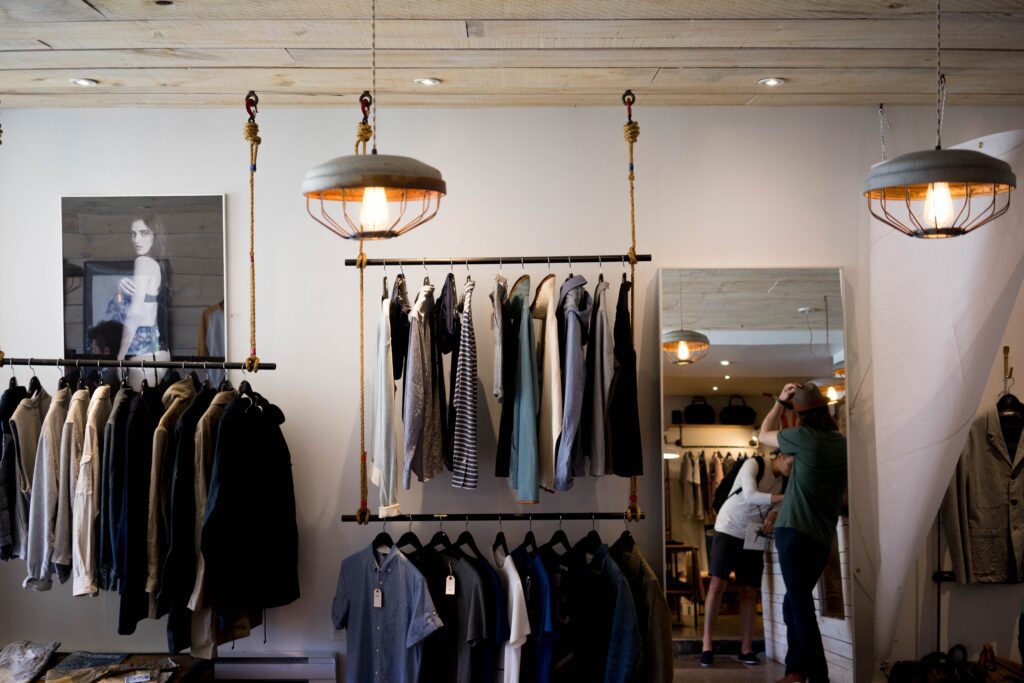In today’s fast-paced world, where shopping centers are always bustling with activity, finding a moment of peace and relaxation can seem like an impossible task. However, the importance of rest zones in these busy shopping centers cannot be underestimated. These pockets of tranquility provide shoppers with a much-needed opportunity to recharge, unwind, and take a break from the hustle and bustle. Whether it’s enjoying a cup of coffee, reading a book, or simply finding a quiet corner to clear your mind, rest zones offer a haven amidst the chaos. So next time you find yourself caught up in the frenzy of shopping, don’t forget to seek out these hidden gems – you’ll be amazed at how a few moments of rest can rejuvenate your shopping experience.



This image is property of images.unsplash.com.
Understanding Rest Zones
Definition of Rest Zones
Rest zones are designated areas within shopping centers where shoppers can take a break, relax, and rejuvenate during their visit. These spaces are specifically designed to provide a comfortable and peaceful environment for individuals to rest and recharge before continuing their shopping experience. Rest zones typically feature ample seating, soothing ambiance, and essential amenities to meet the needs of weary shoppers.
Different Types of Rest Zones
Rest zones can come in various forms and serve different purposes. Some common types of rest zones found in shopping centers include:
-
Seating Areas: These rest zones consist of comfortable seating options such as chairs, benches, and couches. Shoppers can take a seat and unwind while taking a break from their shopping activities.
-
Quiet Zones: Quiet zones are designed to offer a peaceful and serene environment for shoppers who prefer a moment of tranquility away from the bustling shopping crowds. These areas may have designated “silent” or low-noise zones to ensure a peaceful atmosphere.
-
Refreshment Zones: These rest zones provide shoppers with the opportunity to grab a cup of coffee, enjoy a snack, or have a quick meal. Refreshment zones often feature cafes, food courts, or vending machines, allowing visitors to refuel before continuing their shopping spree.
-
Play Areas: Play areas are specially designed rest zones for families with young children. These spaces typically include playground equipment, toys, and interactive games, providing a safe and engaging environment for children to play while parents take a break.
Critical Need for Rest Zones in Shopping Centers
A Haven for Tired Shoppers
Shopping centers are often bustling with activity, and the extensive walking and browsing can quickly leave shoppers feeling fatigued. It is crucial for shopping centers to provide rest zones to cater to the needs of tired shoppers. These areas offer a respite from the physical demands of shopping and allow visitors to recharge, reducing the chances of exhaustion and fatigue.
Growth of Shopping Center Foot Traffic
With the growth of e-commerce, shopping centers are increasingly focusing on creating unique experiences that attract visitors. As a result, foot traffic in shopping centers has seen a significant increase. The influx of visitors means that shopping centers must be equipped to handle the larger volume of people, and offering rest zones is essential to cater to this growing demand.



This image is property of images.unsplash.com.
The Role of Rest Zones in Enhancing Shopping Experience
Promoting Longer Shopping Time
Rest zones play a pivotal role in prolonging the shopping experience. By providing spaces where shoppers can take a break, relax, and recharge, shopping centers encourage visitors to spend more time exploring the various stores and offerings. Longer shopping time increases the likelihood of spontaneous purchases and allows shoppers to have a more comprehensive shopping experience.
Increasing Consumer Satisfaction
Rest zones contribute to overall consumer satisfaction. By providing a comfortable space for shoppers to rest and unwind, shopping centers enhance the overall shopping experience. Visitors who feel refreshed and comfortable are more likely to have a positive perception of the shopping center, leading to increased loyalty and repeat visits.
Attracting More Foot Traffic
Rest zones act as attractions themselves, drawing in more foot traffic to shopping centers. People are more inclined to visit a shopping center that prioritizes their comfort and well-being. Thus, the presence of well-designed rest zones can serve as a unique selling point, enticing potential shoppers to choose a particular shopping center over its competitors.
Impact of Rest Zones on Customer Behavior
Influence on Purchasing Decision
Rest zones have the potential to influence customer behavior and purchasing decisions. When shoppers have the opportunity to relax and take a breather, they are more likely to have a clear mind and make well-thought-out purchasing choices. Additionally, the presence of rest zones can create a positive association with the shopping center, leading customers to make more frequent and larger purchases.
Encouraging Repeat Visits
By providing rest zones, shopping centers create a welcoming and comfortable environment that encourages visitors to return. The availability of these amenities demonstrates care and consideration for shoppers’ well-being, fostering a sense of loyalty and prompting individuals to choose the same shopping center for their future needs.



This image is property of images.unsplash.com.
How Rest Zones Facilitate a Family-Friendly Environment
Accommodating Shoppers with Children
Rest zones play a crucial role in making shopping centers family-friendly. Families with young children often require spaces where their little ones can expend energy and play. By incorporating play areas within rest zones, shopping centers cater to the needs of families and ensure an inclusive environment that enhances the overall shopping experience.
Facilitating Elderly Shoppers
Rest zones also cater to the needs of elderly shoppers who may require frequent breaks during their shopping trips. By providing seating areas and accessible amenities, shopping centers create a more inclusive environment for elderly shoppers, making their experience more enjoyable and comfortable.
Design and Location of Rest Zones
Ideal Spaces for Rest Zones
Rest zones should ideally be strategically located throughout the shopping center to maximize accessibility and convenience. Placing rest zones near high-traffic areas or near store entrances facilitates easy access for shoppers who require a break. Additionally, having both indoor and outdoor rest zones allows visitors to choose according to their preferences, catering to a wider range of needs.
Incorporating Comfortable Furniture
The design of rest zones should prioritize the comfort of shoppers. Comfortable seating options such as plush chairs, benches, and sofas should be provided, along with ample space to accommodate varying numbers of individuals. Ergonomic designs, soft cushions, and adequate lighting contribute to creating a relaxing and inviting atmosphere.
Providing Essential Facilities
Rest zones should be equipped with essential facilities such as clean and well-stocked restrooms, drinking water stations, and charging points for electronic devices. These amenities ensure that shoppers have all the necessary resources at their disposal, further enhancing their comfort and convenience.
The Economic Advantages of Rest Zones for Shopping Centers
Boosting Sales
Rest zones have a direct impact on boosting sales within shopping centers. When shoppers are well-rested and comfortable, they are more likely to spend more time exploring the various stores and ultimately making purchases. Additionally, the provision of refreshment zones allows visitors to refuel, ensuring they have the energy to continue their shopping, thereby increasing the chances of additional purchases.
Increasing Retail Space Value
Shopping centers that prioritize the inclusion of rest zones increase the overall value of their retail space. By offering spaces that cater to the needs of different shoppers, these centers become more attractive to potential retailers, leading to increased demand for rental spaces. This, in turn, allows shopping centers to command higher rents, enhancing their financial performance.
Rest Zones as Advertisement Spots
Leveraging Rest Zones for Promotions
Rest zones can be leveraged as prime real estate for advertising and promotional activities. Shopping centers can partner with brands and businesses to showcase their products or services in these areas. From digital displays to strategically placed promotional materials, rest zones become advertising spots that capture the attention of resting shoppers, potentially increasing brand awareness and driving future sales.
Attracting Advertisers
The presence of well-designed and strategically located rest zones can attract advertisers who are looking for opportunities to connect with a captive audience. Advertisers recognize the value of reaching out to shoppers who are in a relaxed state and more receptive to marketing messages. By offering advertising opportunities within rest zones, shopping centers can generate additional revenue streams and enhance their financial viability.
Case Studies: Successful Implementation of Rest Zones
Famous Shopping Centers with Effective Rest Zones
Several shopping centers have successfully implemented rest zones to enhance the overall shopping experience. For example, Mall of America in Bloomington, Minnesota, features numerous rest zones strategically scattered throughout the mall, providing various seating options and even private nursing rooms for mothers. Another example is Dubai Mall, which has incorporated luxury lounges within its rest zones, offering a premium experience to visitors.
Impact of Well-designed Rest Zones on Revenue
Studies have shown that well-designed rest zones have a positive impact on the revenue generated by shopping centers. By improving the overall shopping experience, rest zones contribute to increased foot traffic, longer dwell times, and ultimately, higher sales. Shopping centers that have invested in innovative and comfortable rest zones have experienced a noticeable boost in revenue, proving the economic value of these amenities.
Future of Rest Zones in the Shopping Environment
Technological Integrations
The future of rest zones in shopping centers is likely to involve various technological integrations. From smart seating options that adjust to individual preferences to interactive screens displaying shopping information and deals, technology will play a significant role in enhancing the rest zone experience. This integration will help create a seamless blend of relaxation and convenience, further attracting and satisfying shoppers.
Creating Experiential Spaces
The future of rest zones will focus on creating experiential spaces within shopping centers. Rest zones will not only provide a place to rest but also offer engaging activities and immersive experiences. This could include virtual reality zones, interactive installations, or even mini-stages for live performances. These experiential rest zones will add an extra layer of excitement and entertainment, promoting longer stays and enhancing the overall shopping experience.
Impact of Future Retail Trends on Rest Zones
As retail continues to evolve, rest zones will adapt to align with emerging trends. For example, the rise of pop-up stores could lead to rest zones featuring temporary retail spaces, allowing visitors to explore unique and limited-time offerings while taking a break. Moreover, the growing focus on sustainability and eco-friendly practices may lead to rest zones integrating green spaces or rooftop gardens, providing a serene and environmentally conscious environment for shoppers to relax in.
In conclusion, rest zones play a vital role in enhancing the shopping experience for visitors to busy shopping centers. These designated areas provide a haven for tired shoppers, promote longer shopping time, increase customer satisfaction, and attract more foot traffic. Rest zones influence customer behavior, facilitate a family-friendly environment, and contribute to the economic success of shopping centers. With their strategic design and prime location, rest zones offer opportunities for advertising and promotion, while case studies demonstrate their positive impact on revenue. The future of rest zones is evolving with technological integrations, experiential spaces, and alignment with future retail trends. As shopping centers continue to prioritize the well-being and comfort of their visitors, rest zones will remain an integral aspect of the shopping environment.
